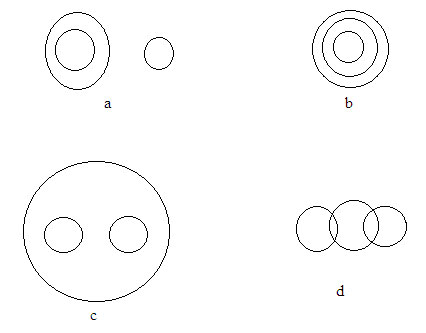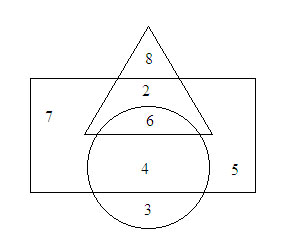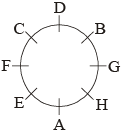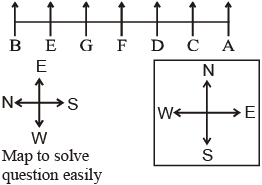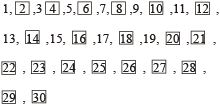Analytical Puzzle Test - Short-cut Tricks And Examples
Type 1: Classification Type of Puzzles
In this type, you have to form a table and plot the information given in the question. Based on your table, you can quickly answer all the sub-questions. (Usually, these types of questions will have more than one sub-questions just like data interpretation problems.)
Below is your example question. This problem will help you in understanding better.
Example Question 1: Study the following information carefully and answer the questions that are given below:
Mahesh and Siva are good in French and English
Anu and Baskar are good in English and Japanese
Anu, Kishore and Raju are good in Japanese and Hindi
Raju and Latha are good in Japanese and Chinese
Kishore and Siva are good in Hindi and French
i. Who is good in Chinese, Japanese and Hindi?
a) Anu b) Kishore c) Raju d) Siva
Answer: c) Raju
Reason:
If you create a table based on the question information, you will get the one below.
| Name | French | English | Japanese | Chinese | Hindi |
|---|
| Mahesh | ✓ | ✓ | | | |
| Siva | ✓ | ✓ | | | ✓ |
| Anu | | ✓ | ✓ | | ✓ |
| Baskar | | ✓ | ✓ | | |
| Kishore | ✓ | | ✓ | | ✓ |
| Raju | | | ✓ | ✓ | ✓ |
| Latha | | | ✓ | ✓ | |
From the table, we can say Raju knows Japanese, Hindi and Chinese.
For the below sub-questions, you do not have to solve from the start. You can answer just by looking at the table you already created.
ii. Which pair is good in French and Hindi?
a) Siva and Latha b) Kishore and Baskar
c) Siva and Raju d) Siva and Kishore
Answer: d) Siva and Kishore
iii. Who is good in French, Hindi and not in English?
a) Mahesh b) Anu c) Raju d) Kishore
Answer: d) Kishore
iv. Who is not good in French, Chinese and Hindi?
a) Baskar b) Mahesh c) Raju d) Siva
Answer: a) Baskar
v. Which of the following pair is good is in French and Japanese?
a) Mahesh and Baskar b) Kishore and Anu
c) Raju and Siva d) None of these
Answer: d) None of these
Reason:
Kishore is the only person who is good in both French and Japanese. In the question, they have asked to find a pair. So the answer is none of these.
Type II: Comparison Type Questions
In type 2, you will find a comparison between two or more people. For example, the comparison could be in the order of strength, height, age, etc. You have to apply the data to get the correct order. Once you have obtained the right order, you can answer all the following questions, quite quickly.
Here is your example.
Example Question 2: Read the following information and answer the questions given below:
Among five friends, Ravi is stronger than Mohit but weaker than Rohit.
Mani is the strongest.
Prem is stronger than Mohit and weaker than Ravi.
i. Who is the weakest person?
a) Mani b) Prem c) Rohit d) Mohit
Answer: d) Mohit
Reason:
From statement 1, Rohit > Ravi > Mohit
From Statement 2, Mani > Rohit > Ravi > Mohit
From Statement 3, Ravi > Prem > Mohit
Hence, the final arrangement is
Mani > Rohit > Ravi > Prem > Mohit
ii. Who is the second strongest person?
a) Ravi b) Mohit c) Rohit d) Mani
Answer: c) Rohit
Type III: Sequential Order of Events
In type 3, you will be ordering events in sequence. You have read the conditions carefully, work out the possibilities and arrive at a logical conclusion.
Now let us go to the example questions.
Example Question 3: Study the following information carefully and answer the questions that follow:
In an inter-school event, competitions for Singing, Dancing, Verse Writing, Fancy Dress, Quiz and Debate have to be conducted for 5 days.
(a) Singing should not be conducted on Thursday.
(b) Verse Writing should be held immediately after Debate.
(c) There should be a gap of two days between Quiz and Fancy Dress.
(d) Dancing should be conducted on Tuesday and should not be followed by Fancy dress.
(e) Singing should not be followed by fancy dress.
i. Which program is to be conducted on Wednesday?
a) Singing b) Verse Writing c) Quiz d) Debate
Answer: c) Quiz
Reason:
From the statements, it is clear that Dancing is conducted on Tuesday.
Two days gap should be there between Quiz and Fancy dress. For this condition, two possibilities are there. One is Monday and Thursday and the other is Wednesday and Saturday.
Verse-writing should have be followed by Debate. Here also two possibilities. One is Friday and Saturday and the other is Thursday and Friday.
Singing may be on either Monday or Wednesday.
There is another condition that is, Singing should not follow Fancy dress. If we take Monday and Thursday for Quiz and Fancy Dress, Singing will be on Wednesday, and it will be followed by Fancy dress. Hence, our condition will not be satisfied.
So, we go for the other possibility and is given in below table.
| Competition | Day |
|---|
| Singing | Monday |
| Verse Writing | Friday |
| Debate | Thursday |
| Quiz | Wednesday |
| Fancy Dress | Saturday |
| Dancing | Tuesday |
Now, you have arrived at the order of the events. Therefore, you can answer any number of sub-questions quickly after that. Below are few sub -questions to help you understand better.
ii. Which Competition is conducted on Friday?
a) Debate b) Dancing c) Quiz d) Verse Writing
Answer: d) Verse Writing
iii. In which day fancy dress competition is conducted?
a) Monday b) Saturday c) Tuesday d) Wednesday
Answer: b) Saturday
iv. After which competition does Quiz is to be conducted?
a) Fancy dress b) Dancing c) Debate d) Singing
Answer: c) Debate
v. Which competition is to be conducted first?
a) Dancing b) Verse writing c) Debate d) Singing
Answer: d) Singing
